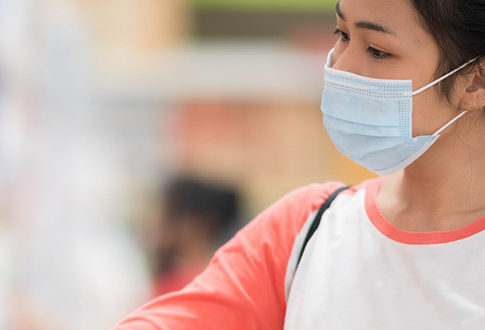Johnson Controls, the global leader for smart and sustainable buildings, today announced that Sensormatic Solutions, its leading global retail solutions portfolio, has released the results of its second annual 2020 Back-to-School survey and third monthly COVID-19 Consumer Sentiment survey of more than 2,100 combined consumers. A key finding revealed an increased adoption of buy online, pickup in-store (BOPIS) options due to in-store shopping concerns related to the COVID-19 pandemic.
Over half (52%) of respondents indicated that they are moderately or very concerned about shopping in-store, an 11% increase from Sensormatic Solutions June COVID-19 survey. As a result, 36% of consumers turned to BOPIS services in July, compared to 32% in April (a 13% increase). The 2020 Back-to-School survey identified a similar trend, as an increasing number of consumers turned to BOPIS/curbside pickup in 2020 for several categories compared to last year’s back-to-school survey, including:
- School supplies – 15% in 2020, a 67% increase from 2019
- Shoes – 11% in 2020, a 38% increase from 2019
- Clothing/apparel – 20% in 2020, a 33% increase from 2019
- Electronics –14% in 2020, a 27% increase from 2019
“The back-to-school shopping season will be the first big test for retailers as we approach the three-month sprint to the holidays,” said Bjoern Petersen, President at Sensormatic Solutions. “Now is the time to pressure test fulfillment operations to ensure they are ready for holiday shopping as we do expect to see significant demand for BOPIS/curbside this year. Therefore, creating a seamless and positive shopping experience through a real-time view of inventory and the right number of store associates on-hand to meet demand will set retailers up for success later.”
Back-to-School Spending Scales Back in 2020
The survey also found that back-to-school spending is expected to be lower than normal due to the current economic climate and ongoing COVID-19 pandemic. Nearly three quarters (70%) of consumers said the current state of the economy would cause them to spend significantly or slightly less on back-to-school shopping in 2020, compared to only 37% in 2019; this is an 89% increase year-over-year.
Looking specifically at apparel, 30% of consumers shopped for this category in-store last month, a 150% increase from April, when many stores were still closed. However, compared to last year’s back-to-school survey, anticipated spending on clothing decreased 39% year-over-year (from 51% to 31%).
Consumers Continue to Demand a Clean and Contactless In-Store Shopping Experience
According to the COVID-19 survey, 44% of respondents said that they would be somewhat unlikely or very unlikely to make a purchase if a retailer doesn’t offer contactless checkout or a physical barrier at the point of sale, a 29% increase from June. In order of importance, 40% of customers ranked cleanliness as top priority, outpacing price (23%) and product availability (23%).
“For the month of July, in-store shopper traffic climbed to -39.4% annually, according to our ShopperTrak analytics, a far cry from -78.6% at the beginning of the pandemic,” added Petersen. “This is largely because, as retail stores have reopened in the United States, many have prioritized measures to make customers feel safe and comfortable in-store, including implementing real-time occupancy solutions to comply with social distancing guidelines and setting up physical barriers at the point of sale.”





